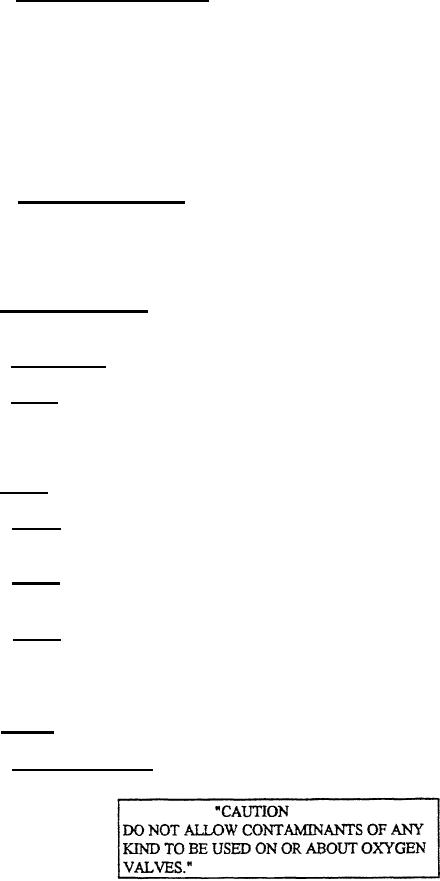 |
|||
|
|
|||
| ||||||||||
|
|  MIL-V-27296C
* 4.6.23 Exhalation mechanism leakage. Four MBU-12/P oxygen mask assemblies each containing a properly
0
0
installed valve will be chilled in a temperature of 50 to 55 F for at least one hour.Immediately upon removing
the mask assemblies from the cooling chamber, individuals will breathe though each of these masks for 3 to 5
0
0
minutes with the regulator lever in the normal position the ambient air at 70 F to 80 F and a relative humidity of
70 to 90 percen. Upon completion of the breathing cycle, the valve will be examined to determine if any of the
mechanism (such as the silicone rubber skirt sections) are stuck to any portion of the valve (such as the
surrounding metal ring) or are otherwise stuck open. Any valve mechanism found stuck in the improper position
for inhalation through the valve shall be cause for rejection of the valve. Next the valve shall be tested for back
leakage as specified (see 4.6.11). Any back leakage of ambient air into the valve in excess of that allowed by this
specification shall also because for rejection of the valve.
4.6.24 Preservation and packaging. Unless otherwise specified in the purchace order or contract, the supplier
is responsible for the performance of all inspections required as listed in table III, MIL-P-116 for the method of
preservation being accomplished.
5. PACKAGING
5.1 Packaging requirements. Unless otherwise specified by the procuring activity, the valves shall be
packaged for delivery in accordance with MIL-STD-2073-1.
5.1.1 Levels A and B. Each valve shall be preserved in accordance with method IA8 of MIL-P-116.
5.1.2 Level C. Each valve shall be provided preservation which will afford adequate protection against
corrosion, deterioration, and physical damage during shipment from the supply source to the first receiving activity
for immediate use. This level may conform to the supplier's commercial practice when such meets the
requirements of this level.
5.2 Packing. The required level of packing, A, B, or C, shall be specified by the procuring activity (see 6.2).
5.2.1 Level A. All valves preserved as specified (see 5.1.1) shall be packaged in exterior-type, weather-
resistant containers. All containers shall be closed, sealed, and reinforced in accordance with appendix thereto,
5.2.2 Level B. All valves preserved as specified (see 5-1.1) shall be packaged in domestic-type exterior
containers. All containers shall be closed and stropped in accordance with appendix thereto.
5.2.3 Level C. All packaged valves which require over-packaging for acceptance by the carrier shall be
packed in exterior-type shipping containers in a manner that will insure safe transportation a the lowest rate to the
point of delivery. Containers shall meet the uniform freight classification rules or regulations of other common
carriers as applicable to the mode of transportation.
5.3 Marking. The exterior and interior containers shall be marked in accordance with MIL-STD-129.
5.3.1 Precautionary marking. The following precautionary marking shall appear on each unit package.
12
|
|
Privacy Statement - Press Release - Copyright Information. - Contact Us |